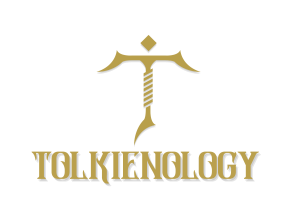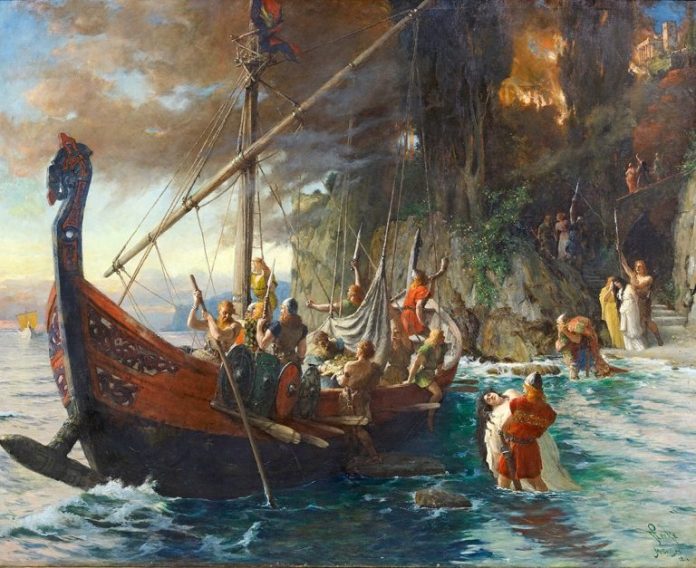The Norse and Germanic influences that Tolkien applies in his legendarium is finely interwoven to create a rich fantasy world. A world that is detailed in explaining the origins of the races in Arda and their languages, and histories through thousands of years. Of course, Tolkien took inspiration from other religions and histories, but the Norse and Germanic ones are quite prevalent. When I say Germanic, I also mean Anglo-Saxon, which was a personal and professional interest of Tolkien.
If you haven’t already noticed it from reading Tolkien’s works, the details within the legendarium make sense as to why there are Sindar, Noldor and Teleri elves, their histories, differences, and explanations as to why they are who they are.
The different groupings of the races and different languages are because of wanderings similar to the migration periods of the late Roman Empire, where ethnic groups moved from their homelands of northern Europe into new regions often adopting to the local environment or steadily changing to something different. The Goths, Lombards, Vandals and many more. The wanderings in Tolkien’s universe are quite similar to the elves in Middle-earth, taking the great journey to from Cuivienen in Middle-earth to Valinor. Also, the wandering of men west into Beleriand. Along the way some groups stopped, and some chose not to venture at all, becoming new people, ethnicities, and nations.
The Norse dwarves and more.
Dwarves in Middle-Earth also have a rich history but because they were so secretive about their language Khuzdul, consequently little is known about them in the books. From what little is explained about the dwarven language of Khuzdul, it takes inspiration from Hebrew. A tradition among the dwarves is that they have an inner and outer names. Of the inner secretive Khuzdul names from what we know, though not entirely sure, is from the tale of the last Petty-Dwarves in the story of the Children of Hurin. Khuzdul names being Khim, Mim and Ibun. It has also been suggested by some that Azaghal Lord of Belegost, is an inner name but some suggest it may be an epithet. Yet the norse influence becomes clear in the outer names of the dwarves. Names primarily in the language of the Northmen of Middle-Earth. Noble men were believed to be descended from the Edain but did not cross the Ered-Luin into Beleriand but stayed in Rhovanion. Men who would later become the Rohirrim and the men of Dale.
The names Durin, Balin, Dwalin, Gimli, Glóin and the rest of the Company of Thorin are all names directly from Völuspá,a norse poem from the Poetic Edda. Interestingly, Thorin son of Thrain son of Thór Oakenshield is composed of two dwarf names, Þórinn and Eikinskjaldi, and of course Þrár and Þráin are also dwarven names. Even Gandalf is a dwarf name. All these connections to the Dalish are there because of the dwarves proximity to the Northmen, such as Erebor to Dale and Khazad-dum to the men between the Greenwood and the Misty Mountains who became the Eotheod. Naturally, the dwarves became acquainted with these men and their outernames became the northern.
Narvi who crafted the Westgate of Khazad-dum with Celebrimbor is from the Edda, spelled Narfi and is a son of god of mischief himself Loki.
From Völuspá
- Þar var Móðsognir
mæztr um orðinn
dverga allra,
en Durinn annarr;
þeir mannlíkun
mörg um görðu
dvergar í jörðu,
sem Durinn sagði.
Translated it says, that Móðsognir was the first and most revered of all the dwarves and Durin the second, and in the shape of men, they created many dwarves from the earth. The last line says, Durin named them, that which follows is a long list of names of dwarves, many used by Tolkien. Furthermore, the name for the dwarven clan of Durin’s Folk, the Longbeards. Being both old Norse and Germanic in origin, firstly the Germanic group that migrated to Italy establishing their kingdom, which subsequently became the northern Italian region of Lombardy. It is derived from what is attested in records as the people known as the Lombards from “Langobardi” meaning long beards. Secondly, in old Norse it is, one of many attested names of Odin, appearing as “langbarðr”, which has the same root meaning, that is, having a long beard.
The Norse and Anglo-Saxon horse-lords
Like Tolkien’s detailed storytelling, the evolution and origins of the peoples and their languages are no exception. Like their real-world counterparts, the Germanic languages, which branched out and becoming Norse, Anglo-Saxon and Gothic, and many more, the language of the Northmen branched out to become Dalish and Rohirric.
Anglo-Saxon application to the forefathers of the Rohirrim, known as the Eotheod’s which literally translates “horse-people” in Anglo-Saxon. Their names also follow suit, from Eorl to Fram and later Theoden to Eomer, all have significant connotations in Anglo-Saxon and relate to horses. Theoden meaning “leader of people”, and Eomer “horse famous”, and Eowyn “horse friend”. The use of Eorlingas means people or clan of Eorl’s a similar thing is found in Norse such as the “Ylfingar”, meaning wolf clan. Tolkien also used “Beornings” for the people of Beorn.
Dalian or Dalish language was spoken on the others side of the Greenwood and is the old-Norse of Middle-Earth. Spoken in Dale and Lake-Town. Some names such as the rulers of Dale have norse origins. Bard, Brand and Bain. Old norse, Bárðr, Beinn and Brandr. Girion being the exception though, which appears to be a Sindarin name. Dale in itself is an ordinary name for villages and towns in the Norse speaking countries, such as Dalur or Dalr, meaning valley.
A noteworthy mention is the name for Tolkien’s world, Middle-earth from Miðgarðr in Norse and Middangeard in Anglo-Saxon.
The stories used to tell of the histories of these peoples are inspired by or are quite obviously rehashed into the legendarium. The story of the lord of the Eotheod Fram and the dragon Scatha, both names with significant Angla-Saxon denotations. Fram is Anglo-Saxon meaning valiant and Scatha from “sceaða” meaning injury, or to scathe. The story itself is paralleled by the Norse and germanic Sigurðr and Fafnir the dragon, tales from the Poetic Edda and the German Niebelungenlied.
Furthermore, the story goes that Scatha sits on a great hoard of the dwarves and later after slaying Scatha, Fram is killed by the dwarves because of their claim to the hoard. The greed that becomes synonymous with the dwarves later is somewhat parallel to the Norse dwarves, both in coveting what they craft and that the greed may get out of hand and become a sickness. Referenced as dragon-sickness which lies on a hoard and may affect people. Fafnir the dragon, is in fact a dwarf that was transformed into a dragon because of greed and hoarding.
Odin the Grey
Even more obvious is the wizard Gandalf, central to the story of the Hobbit and the Lord of The Rings, which has been pointed out to be modeled after the Germanic god Odin, and Tolkien in a letter from 1945, refers to Gandalf as an Odinic wanderer.
Moreover, even Gandalf’s appearance has Odin written all over it, with the few exceptions of not missing an eye and carrying a staff instead of a spear. Yet the characteristics of an Odinic wanderer, that wanders the lands and often parting with knowledge to the people he meets are very much characteristics of Odin. The wanderings of Odin throughout Miðgarð and all the Nine Realms was first to obtain knowledge but along the way he encounters races and other beings. Much like Gandalf encounters Hobbits, Elves and Men, and many other creatures, communicating with them all.
Instead of the Eagles of Manwe, Odin had to ravens called “Huginn” and “Muninn”, who brought Odin news and information. Gandalf like Odin, has many names, in fact Odin has closed to hundred names. Gandalf is known as Greyhame in Rohan, meaning Grey cloaked, and Mithrandir amongst the Elves, meaning Grey wanderer, and Tharkun amongst the dwarves, meaning staff man. Odin has names such as “Gangleri” meaning wanderer, and “Gondlir” meaning staff bearer, and “Jolfoðr” Yule father, or father Christmas. Both Odin and Gandalf walk disguised througout the lands, or realms. Similarly both walked as cloaked and bearded figures while their true natures as a god and Istari respectively, was hidden. In summary, if you know where to look, one can see what inspired Tolkien to build his world of Arda and create languages, histories and characters in his world







